I’ve spent over a decade hanging around stages, bootcamps, scrims, and those charming 2 a.m. ranked lobbies that smell like energy drinks and regret. So here’s me, finally putting down the lessons learned from top esports players. The real stuff. Not the “believe in yourself” fluff. I’m talking esports mindset, tournament prep, VOD review habits, aim training routines, team communication, tilt control, burnout signs, and all the glamorous things like wrist stretches and clean mice feet. If that sounds boring, good. Boring wins games.
How I Started Seeing the Game Behind the Game
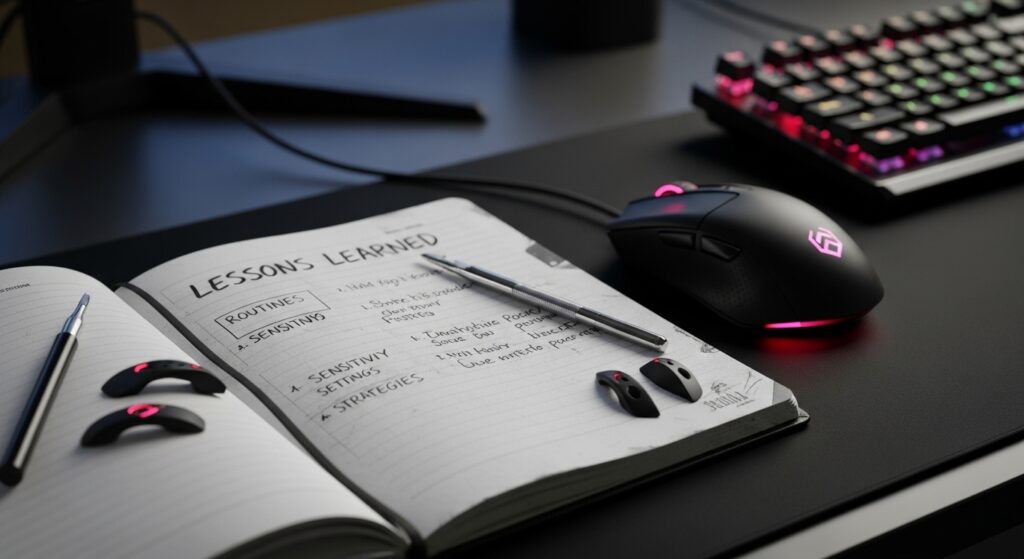
In my experience, the best players are not magical. They’re predictable. Their “talent” is a very boring system, repeated like clockwork. I learned this the hard way, getting stomped by teenagers who did the same warm-up routine every day while I “felt it out.” What I think is funny: the ones who look most effortless are usually the most obsessive about the tiny stuff. Sensitivity. Crosshair. Communication codes. Notes. Yes, they have a notebook. Or a Google Doc. Or both.
I once watched a pro refuse to start scrims because his mouse feet felt “sticky.” He replaced them mid-practice. Everyone rolled their eyes. Then he dropped 30. Silly? Maybe. But if your brain believes sticky feet equals bad aim, then yeah, fix the feet. That’s what champions do. They reduce friction. They make success dumb and repeatable.
Mechanics: Not Magic, Just Maintenance
Warm-Up Like It’s Brushing Your Teeth
- Start with 10–15 minutes of aim training. Flicks, tracking, micro-adjustments. Keep it simple.
- Do 3–5 rounds of your core drills. Don’t chase a high score every time. Focus on accuracy and control.
- Finish with game-specific drills. Utility lineups. Movement. APM bursts if you’re in a strategy title.
- Stretch hands. Forearms. Neck. I used to think this was cringe. Then my wrist pinged like a Discord alert.
I’ve always found that mechanics improve way faster when you hold back a little. Stay smooth. Don’t squeeze the mouse like it owes you rent. If you aim like a statue and breathe like a human, your crosshair stops fighting you.
Settings Are a Personality Test
- Pick a sens based on control, not ego. If you overshoot a lot, lower it. If you feel sluggish, bump it up slightly.
- Lock your settings after you get comfy. No “new sens every Tuesday” nonsense. Consistency builds muscle memory.
- Frame rate headroom matters. 240+ Hz feels like cheating once you get used to it. FPS stability is free confidence.
I’ve seen rookies copy pro settings like they were downloading skill. That’s not how it works. A pro’s 1.8 sens on 800 DPI only makes sense with their hand size, mouse shape, pad texture, and weird grip that looks like a bird claw. Test your own. Then stop changing it. Please.
Comms: Clear, Short, Boring (On Purpose)
Top squads communicate like air traffic control. Short. Specific. No drama. If your comms sound like a podcast, you’re doing it wrong.
- Say location, number, action. “Two mid pushing fast.” “Holding A.” “Flashing short.”
- Call your plan. “I bait.” “I trade.” “I save.” Simple verbs, less chaos.
- Give only one piece of info at a time. Not your life story. Not your childhood trauma.
- Use agreed words. Same callouts every time. No freelancing.
I watched a team go from mid-tier to terrifying because they cut their words in half. The IGL stopped giving monologues, the star stopped whining when smoked off, and suddenly—miracle—they clutched more. Funny how that works.
Confidence Is a System, Not a Feeling
Reset Faster Than You Tilt
- Hard rule: after you die in a dumb way, breathe out, touch your chair, and look at the minimap. That’s your reset cue.
- Between rounds: one sentence on what changes next. “Group B.” “Double-nade mid.” “Play for info.” Done.
- Between maps: stand up. Water. One good note. One mistake to avoid. Move on.
The best players treat confidence like a checklist. Easy wins stacked together. Not vibes. Vibes lie. Systems don’t.
Clutching Isn’t “Ice.” It’s Math.
I’ve always found that pros look calm in clutches because they’re running the same two or three scripts. Angle isolate. Time check. Utility count. That’s it. They’re not summoning inner dragons. They’re doing less, cleaner.
Study Like a Nerd: VODs, Notes, Tiny Experiments
VOD review is where the real rank-up happens. Not in solo queue. Not in your 7th deathmatch. Reviewing your games is how you fix patterns that your ego hides.
- Watch your losses. Painful, yes. Necessary, also yes.
- Write one “keep” and one “change” note per map. Keep it short. You’ll actually read it later.
- Tag mistakes. Late rotates. Bad trades. Dry peeks. Heat map your pain.
- Find one new timing per map. A late lurk. A fake step. A fast break. Then test it next scrim.
If you want a clean, no-nonsense outline of how pros do tournament prep and the cycle of practice, review, and reset, I like this guide on tournament prep, practice, review, reset. It’s not fancy. It’s useful.
Borrowing From GOATs Without Cosplaying Them
I’ve taken notes from legends. Watching Faker control a lane is like watching someone count cards with a keyboard. Watching s1mple hold an angle makes you wonder why anyone else even tries. But the big lesson isn’t “be them.” It’s “steal one thing at a time.” One setup. One crosshair placement. One timing. Then fit it to your game sense.
Top players are great at a boring thing: they delete options. Fewer positions, fewer timings, fewer weird ideas on game day. They refine the pool so their brain doesn’t melt when it matters.
Practice Blocks That Actually Work
What I think is underrated: limiting practice blocks. Not grinding until your brain turns into mashed potato.
- Block 1: mechanical warm-up (15–20 min)
- Block 2: ranked or scrims (60–90 min)
- Short break: water, walk, reset (5–10 min)
- Block 3: focused drills on weak spots (20–30 min)
- Block 4: VOD review or notes (10–15 min)
Repeat once later if you need. Two quality blocks beat five hours of mindless queue. Every time.
Team Culture: Less Ego, More Rules
I learned this by getting yelled at by a coach who looked like he hadn’t slept since 2014. Good teams have rules that protect emotions. Not the other way around.
- One voice in clutch. If it’s not your clutch, you are a quiet roommate.
- Feedback after rounds is neutral. “Next time hold wider.” Not “You’re throwing.”
- Blame systems, not people. “Our timing is off.” Then fix the timing.
- Celebrate boring plays. Saving guns. Shoulder peeks. Patience. That’s the real highlight reel.
Health: The Stat Everyone Ignores Until It’s Gone
Sleep Like You Mean It
- Same sleep window daily. Your brain hates improv.
- Cut screens 30 minutes before bed. Yes, even your TikToks. I’m sorry.
- Dark, cool room. Hydrate. No heavy food late.
I’ve seen more careers ruined by bad sleep than bad aim. You can’t outplay brain fog.
Hands, Eyes, Neck: Maintenance Mode
- 10-second hand stretch between maps. Wrist flexors and extensors. Rotations.
- Neutral posture. Chair adjusted so elbows and knees sit at 90 degrees-ish.
- Look at a far object every break. Rest the eyes. Blink like a human again.
Burnout Isn’t Drama. It’s Physics.
- Early signs: dread before queue, silly mistakes, snapping at teammates, “one more game” spiral.
- Fix: shorter blocks, literal days off, solo play swapped for VODs, fresh maps or roles for curiosity.
I used to power through burnout like a genius. Spoiler: I got worse, not better. Rest is part of training. End of story.
Tournament Day: My Low-Tech Checklist
- Wake up early enough to feel human. No speedrun mornings.
- Light food. Water. Coffee if it helps, not if it shakes your aim.
- Short warm-up. Don’t fry yourself before map one.
- Two or three game plans prepped. Default. Fast hit. Late lurk. Pick based on read.
- Post-map reset script: one thing to keep, one thing to change, move on.
This is not rocket science. It’s more like tying your shoes so you don’t trip on stage.
Mindset: Grit Is Overrated. Curiosity Wins.
Grit is fine. Curiosity is better. The best players get oddly excited about tiny fixes. “If I shift this smoke by one pixel, do I get more room?” That dumb question is the blueprint for progress.
- Ask one small question each session. Test it. Keep or toss.
- Be proud of boring progress. Better trade timing. Cleaner crosshair at head height. Less panic.
- Keep a “wins” list. Not ego. Data. Proof you’re not stuck.
Roles: Know Your Job, Then Be Annoying About It
This is where many teams explode. Everyone wants to be the hero. Great teams treat roles like jobs. You can be creative inside the job. Not outside it.
- Entry: you pull space. You die first sometimes. That’s not failure. That’s breakfast.
- IGL: you set the pace, not the volume. Calm beats loud.
- Support: utility nerd. You win rounds with grenades and timing. MVP in the shadows.
- Lurker: patience merchant. You punish rotations, not your own team.
- AWP/OP role: you’re the lever. Don’t overpeak. Move with purpose.
Information Is a Weapon. So Is Silence.

I’ve seen top teams hold info like it’s gold. They don’t dump it. They share it when it changes the round. A lot of mid teams do the opposite. Talk a lot, say nothing.
- Call info when it changes the decision. Not before. Not after.
- If your plan is set, stop adding noise. Execute.
- Silence is okay. Your crosshair will thank you.
When to Copy Pros, When to Ignore Them
- Copy: fundamentals. Crosshair height. Utility lineups. Timing discipline. Default setups.
- Ignore: weird plays meant for stage nerves. Off-meta picks that work because of fear factor. That’s theater.
- Copy: how they reset, how they review, how they talk.
- Ignore: their sleep schedule during playoffs. You are not them. Yet.
Steal the skeleton. Build your own muscles.
Consistency Beats Passion (Sorry)
Passion helps you start. Routine keeps you winning. I’ve seen grinders who “love the game” wash out because their days had no shape. I’ve seen quieter players climb because they did the same simple loop daily. Play. Review. Fix one thing. Sleep. Repeat.
Simple “Cheat Sheet” You Can Actually Use
- Mechanics: 15 minutes aim drills, 5 minutes utility, light stretches. Smooth over fast.
- Comms: location-number-action. One plan. One voice in clutch.
- Mindset: breathe-reset-note. Confidence is a list, not a feeling.
- VODs: one keep, one change, one test. Watch losses.
- Health: sleep window, water, wrist care. Short breaks.
- Settings: pick, lock, stop changing. FPS stable, sens stable.
- Roles: do your job, then add flair. Not the other way around.
Myths I Keep Hearing (And Keep Ignoring)
- “Just grind more.” Cool. Grind smarter, not longer. Breaks matter.
- “Pros never get nervous.” They do. They just recover fast.
- “Copy a pro’s settings and you’ll be cracked.” Copy their routine instead.
- “Talking more is good comms.” Talking better is good comms.
- “Tilting means you’re weak.” Tilting means you’re human. Reset faster.
A Few Mini-Stories Because Why Not
At one LAN, a teammate brought a tiny desk fan. Everyone laughed. Then the room hit 30°C and he was the only one not sweating into his mousepad. He won MVP. I bought a fan the next day.
At another, we added one word to our comms: “stop.” If someone said “stop,” we all froze and rechecked the plan. Saved three rounds. That one word felt like cheating.
Once, I spent a week copying a star player’s aggressive angles. I fed. A lot. Then I noticed his team’s utility made those angles safe. I didn’t have that. I went back to my boring angles. My K/D recovered. Lesson learned: context is king.
If You Want to Start Tomorrow, Do This
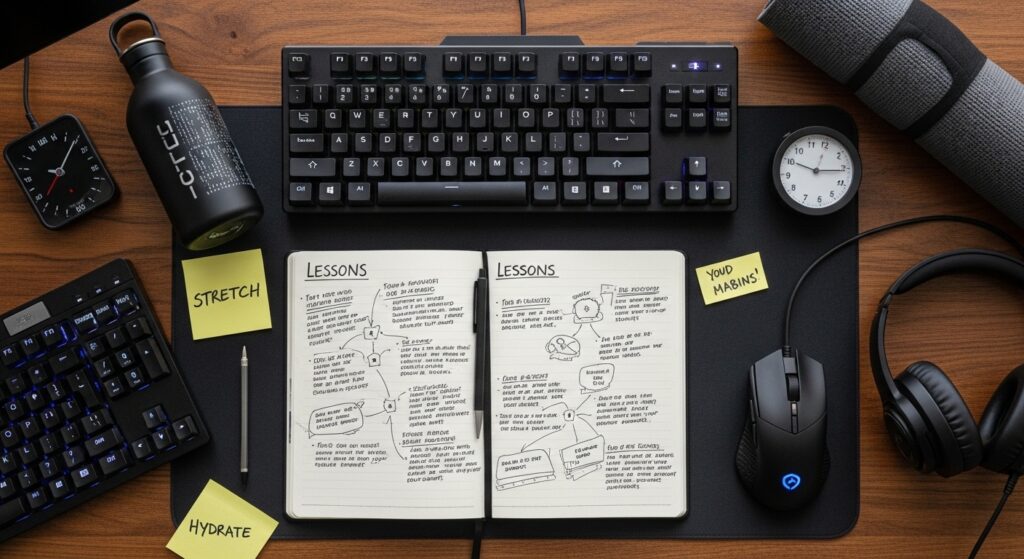
- Pick one warm-up routine. Write it down. Do it for a week.
- Lock your settings. No changes for seven days. Survive the itch.
- After every session, write one “keep,” one “change,” one “test.”
- Drink water. Do one stretch. Your hands will love you.
- Say less in comms. Say better words. You’ll feel the difference fast.
That’s it. Not glamorous. Effective, though. I’ve seen these tiny things carry teams farther than “motivational speeches” ever did. And yeah, I know I promised some lessons learned from top esports players and now I’m yelling about sleep and writing notes. That’s the trick. The top end is built from the dullest bricks.
Role Models, But Make It Real
Watch the stars. Borrow their best habit. But keep your own brain in charge. You don’t need to play like Faker to steal his spacing. You don’t need to hit like s1mple to steal his patience. What you need is a routine that makes your good days normal and your bad days less bad. That’s the boring magic behind top-level play.
Random Tech Stuff That Saves Sanity
- Clean mouse feet and pad. Dust is aim’s worst enemy.
- Cable management. Drag ruins micro-corrections.
- Turn off background junk. CPU spikes make input feel like soup.
- Same chair height every day. Muscle memory starts at your hips.
Money, Contracts, and Other Fun Adult Things
I’ll keep it short. Get everything in writing. Always. Read contracts. Ask about buyouts and bench clauses. Don’t sign your life away for a hoodie and a “family” speech. Build a little personal brand on the side. Some clips. Some notes. It helps when you switch teams or roles. Also, taxes are real. They will find you.
And Finally, The Part Nobody Wants To Hear
I know I’m repeating myself, but this is the work: consistent routine, simple comms, steady review, and gentle ego. Do that for months. Not days. You’ll be shocked where you end up. Honestly, I still am. Every season.
Anyway. I’ve got a VOD to watch and a chair to adjust by half an inch. Don’t judge me. This is what we do. It’s how the small stuff turns into bigger wins. If you wanted fancy, you’d be watching a montage. If you wanted real, well… now you’ve got it. These are my actual lessons learned from top esports players. Also from late nights, bad fries, and a lot of losses that taught me more than wins ever did.
FAQs
- What’s the fastest way to stop tilting mid-game? Breathe out, look at the minimap, say one plan out loud. Then shut up and do it.
- How long should I warm up before ranked? 15–20 minutes is enough for most people. Aim drills, a few utility reps, done.
- Do I need pro settings to get good? No. You need stable settings. Pick a sens you control and stop changing it.
- How often should I review VODs? After rough sessions or once every few days. One keep, one change, one test keeps it simple.
- What if my team won’t communicate? Set basic rules. Short calls. One plan. If they refuse, find new people. Life is too short.
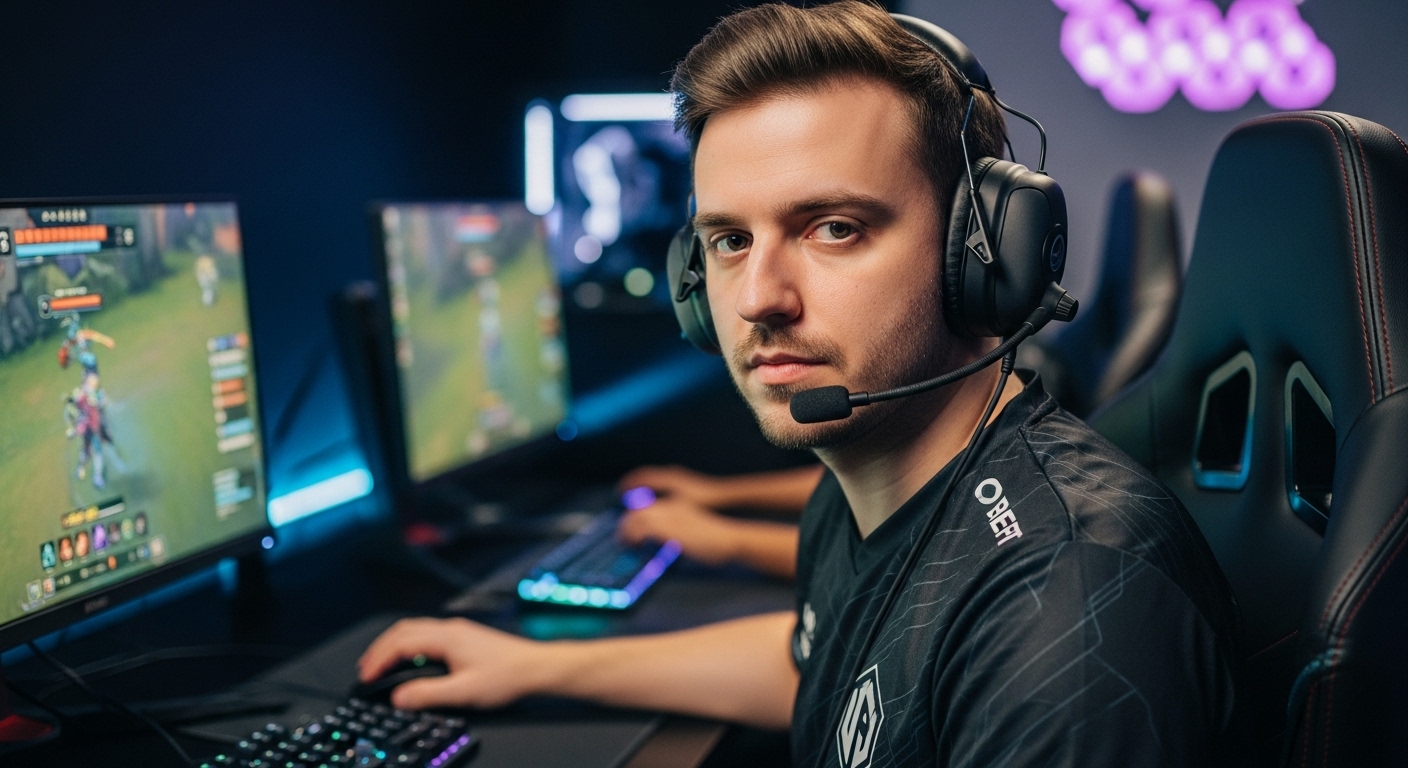
John | Your source for Esports, Battle Royale, Role-Playing, Retro Games, and Gaming Gear. Let’s Enjoy!

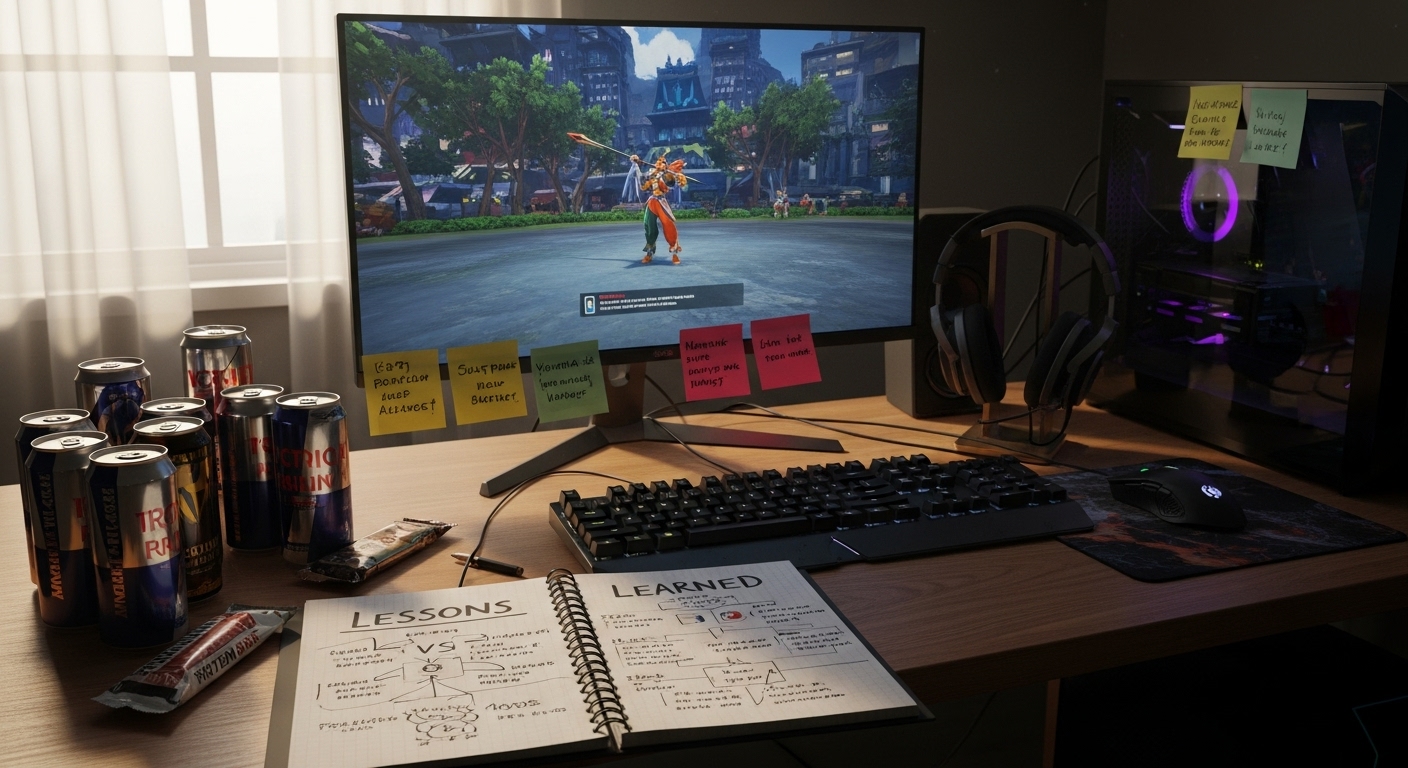

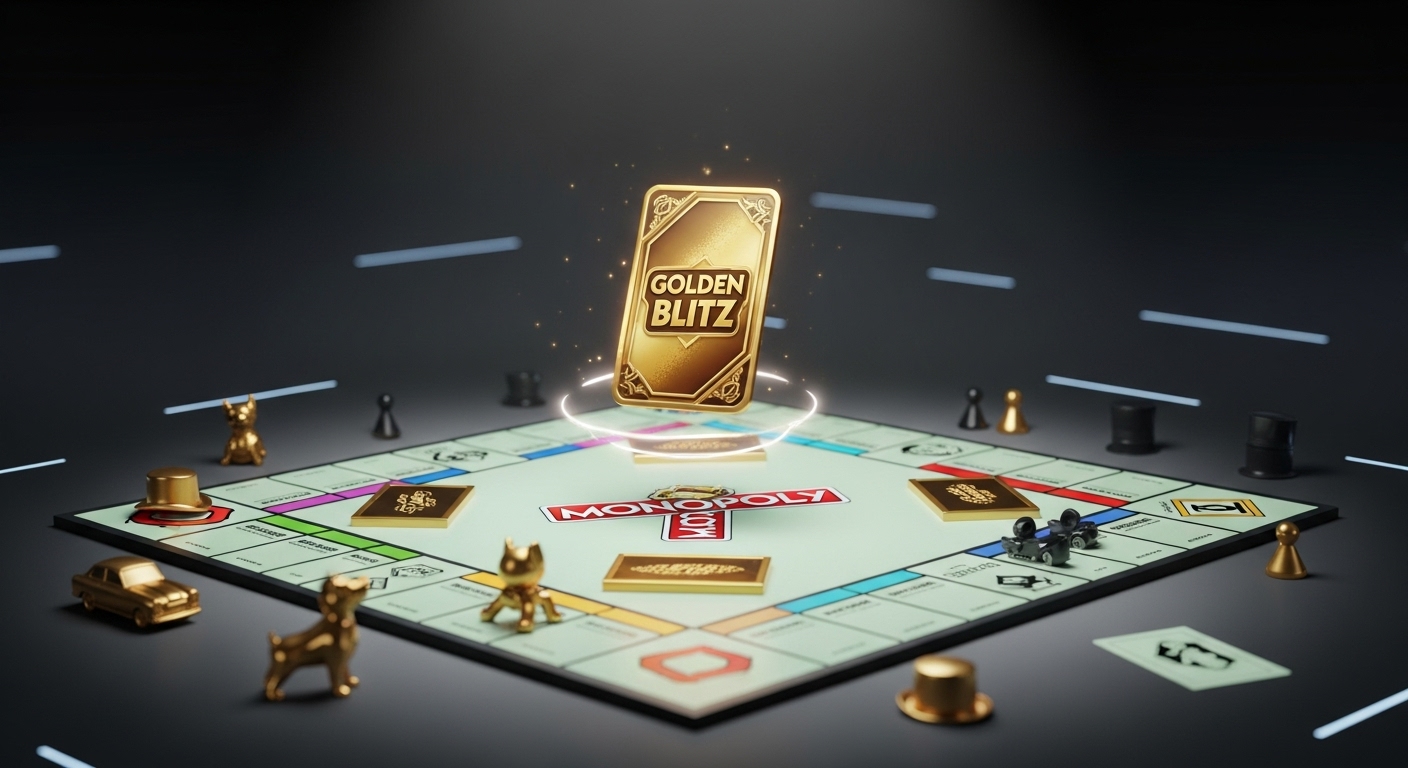
Comment: Just like video games, success is made up of boring, consistent systems. Who knew sticky mouse feet could be a game-changer?
Esports require meticulous preparation and consistency, not just raw talent. Boring wins games in the end.
Unique insight on the behind-the-scenes work that goes into esports success. The mundane details matter most.
Love this reminder that success is in the boring, repetitive routines. Consistent hard work breeds champions.
Wow, amazing insight! Consistency and maintenance truly are key. Boring but effective.
My game has already improved just by implementing these mechanical and mindset tips. Thanks for the advice!
The key is in the details and consistency – a boring system wins games every time!
Do you have any specific pre-game stretching routines to share with us?